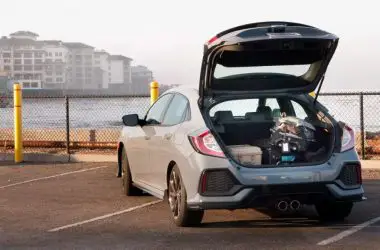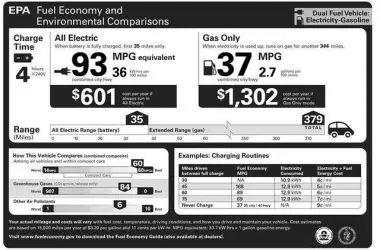Kilometers per liter (km/l) is an important fuel efficiency metric that measures the distance a vehicle can travel on one liter of fuel. It is commonly used around the world, especially in countries that utilize the metric system, as an indicator of a vehicle’s fuel economy.
The km/l measurement provides valuable information about how far a vehicle can go before needing to refuel. A higher km/l rating indicates better fuel efficiency and lower fuel costs for the driver. Understanding km/l ratings allows drivers to compare vehicles and make informed decisions when purchasing. It also assists drivers in budgeting for fuel costs during the ownership of the vehicle.
This article will provide an in-depth look at km/l – how it is calculated, typical ranges, factors that affect it, and how drivers can aim to maximize their km/l. Comparisons to the mpg (miles per gallon) rating more commonly used in the United States will also be made. The goal is to give readers a comprehensive understanding of this important fuel efficiency metric.
Calculating Km/L
The formula for calculating kilometers per liter (km/l) is fairly straightforward. As defined by Calculator Academy, the formula is:
Km/L = Distance Traveled (km) / Fuel Used (L)
For example, if a car traveled 300 kilometers on a tank of fuel, and it took 50 liters to refill the tank, the km/l would be calculated as:
Km/L = 300 km / 50 L
Km/L = 6
Therefore, this car averaged 6 km/l over the 300 km trip before refueling. The higher the km/l, the more fuel efficient the vehicle is over that driving cycle.
Compare to MPG
Kilometers per liter (km/L) and miles per gallon (MPG) are two different measures used to gauge fuel efficiency of vehicles. While km/L is commonly used outside North America, MPG is more common in the United States and Canada.
The two units can easily be converted based on the fact that 1 kilometer is equal to 0.62137 miles. The formula for converting between km/L and MPG is as follows:
MPG = km/L x 2.352
So for example, a vehicle getting 10 km/L would get approximately 23.52 MPG. Going the other direction, a vehicle with a fuel efficiency of 30 MPG would get around 12.8 km/L.
The typical range for fuel efficiency for passenger vehicles is between 8-12 km/L or 18-28 MPG. More fuel efficient vehicles can achieve upwards of 25 km/L or 60 MPG. Understanding the conversion allows drivers worldwide to compare vehicle fuel efficiency despite using different traditional units of measure.
Typical Range
Km/L can vary widely between different vehicle types. According to the U.S. Department of Energy’s fuel economy comparison tool, here are some typical Km/L ranges:
Small cars: 12-20 Km/L
Midsize cars: 10-15 Km/L
Large cars: 8-12 Km/L
Small SUVs: 10-18 Km/L
Midsize SUVs: 8-14 Km/L
Minivans: 8-12 Km/L
Pickup trucks: 8-18 Km/L
The most fuel efficient vehicles, like hybrids and electric cars, can achieve over 20 Km/L. On the lower end, some large trucks and SUVs get less than 8 Km/L. Driving habits, load weight, terrain, and other factors also impact real-world results.
Factors Affecting Km/L
There are several important factors that can affect a vehicle’s fuel efficiency and km/l rating, including:
Weight – Heavier vehicles require more energy to accelerate and move, reducing fuel efficiency. Lightweight vehicles with less cargo generally achieve better km/l.1
Aerodynamics – The shape and design of a vehicle impacts wind resistance and drag. More aerodynamic vehicles encounter less air resistance, resulting in better km/l.2
Engine efficiency – More fuel efficient engine designs waste less energy and convert more of the fuel into motion, improving km/l. Gasoline or diesel engines vary widely in efficiency.3
Driving conditions – Road conditions, terrain, speed, acceleration, and weather all impact the engine’s workload and km/l. Optimal conditions improve efficiency, while stop-and-go traffic, hills, and cold weather reduce it.
Improving Km/L
There are several ways drivers can improve their vehicle’s fuel efficiency and km/L. Some key ways include:
Driving Habits
How you drive can significantly impact your km/L. Aggressive driving with rapid acceleration and braking will reduce efficiency. Maintaining a steady speed and anticipating stops and starts can improve km/L by up to 33% on highways and 5% around town (https://in.linkedin.com/in/onkar-bongale-3b93518b). Additional tips include:
- Avoid excessive idling
- Use cruise control on highways
- Avoid carrying excess weight
- Plan routes in advance to avoid unnecessary driving
Maintenance
Properly maintaining your vehicle per the manufacturer’s recommendations can improve fuel efficiency. This includes:
- Regular oil changes and tune-ups
- Properly inflated tires
- Replacing dirty air filters
Vehicle Choice
Choosing a more efficient vehicle can dramatically improve km/L. Compact cars and small SUVs with 4-cylinder engines tend to be most efficient. Diesel engines also tend to achieve better fuel economy. Hybrids and electric vehicles maximize efficiency, with some achieving over 100 km/L equivalent (https://in.linkedin.com/in/onkar-bongale-3b93518b).
Environmental Impact
The kilometers per liter (km/l) rating of a vehicle is directly related to its emissions and impact on the climate. Higher km/l values correspond to lower emissions of greenhouse gases like carbon dioxide (CO2), as well as other pollutants like nitrogen oxides (NOx) and particulate matter (PM). This is because higher efficiency means using less fuel to travel the same distance, resulting in lower emissions.
For example, according to a study by Savardekar, a gasoline vehicle with a fuel efficiency of 8 km/l emits 273 grams of CO2 per kilometer, while an electric vehicle emits just 58 grams per kilometer (Savardekar, 2020). This demonstrates the massive difference in emissions between low and high efficiency vehicles.
Governments often use fuel efficiency standards and regulations as a way to reduce transportation emissions and meet climate goals. By requiring manufacturers to improve km/l ratings over time, net emissions can be lowered. However, some rebound effects have been observed, whereby increased fuel efficiency leads to more driving, undermining some of the emissions reductions (Onat et al., 2023).
Government Regulations
Governments around the world have implemented regulations and standards related to fuel efficiency and emissions in order to reduce energy consumption and environmental impact from vehicles. Over 40 countries now have regulations regarding fuel economy or CO2 emissions for light-duty vehicles, including major auto markets like the United States, China, Japan, and the European Union.
These regulations often involve setting corporate average fuel economy (CAFE) standards, which require each auto manufacturer’s new vehicle fleet to meet an average km/l or emissions level per year. The standards become stricter over time, pushing for improvements in fuel efficiency. For example, the U.S. is targeting an average of around 35.5 km/l for vehicles in model year 2025 under the CAFE program [1]. The EU aims for 59.4 km/l by 2030 [2].
Future Outlook
As automakers innovate new technologies to improve fuel efficiency, the future looks bright for obtaining higher km/L ratings. Some key trends include:
Electric vehicles (EVs) are rapidly improving and becoming more affordable. EVs have much higher km/L equivalents since they use no gasoline at all. Many automakers are committing to transition their fleets to mostly EVs over the next 10-20 years. (Source)
Advancements in battery technology will enable EVs to travel longer distances before recharging. Solid state batteries are one promising innovation that can store more energy in a smaller, lighter package. (Source)
Lighter materials like carbon fiber and aluminum allow automakers to reduce vehicle weight, putting less strain on the engine and improving efficiency. Aerodynamic redesigns also help cars slice through the air using less energy. (Source)
Connected and autonomous vehicle technology will enable cars to drive more efficiently by optimizing speed, acceleration, routing, and driving habits. Self-driving cars can potentially get much better km/L.
As fuel efficiency continues improving, drivers will save on fuel costs while reducing environmental impact. Stricter government regulations will also pressure automakers to innovate new technologies and achieve new milestones in km/L ratings.
Conclusion
Kilometers per liter is an important metric used internationally to measure fuel economy and consumption. By tracking km/L, drivers can monitor the efficiency of their vehicle and make adjustments to maximize fuel economy. With rising fuel prices and environmental concerns, improving km/L through techniques like proper maintenance and adjusting driving habits enables significant cost and emissions savings.
As a standard measure across the auto industry and many countries, km/L provides a simple way to compare the fuel efficiency of different models. Along with fuel costs, the km/L rating factors into consumer vehicle purchases and government regulations. While electric vehicles aim to provide an alternative to traditional combustion engines, tracking km/L will remain relevant for gasoline and diesel vehicles in years to come.
In summary, kilometers per liter gives drivers insight into real-world fuel usage and serves as a helpful metric for consumers, manufacturers, and governments working to improve energy efficiency and reduce environmental impact.




